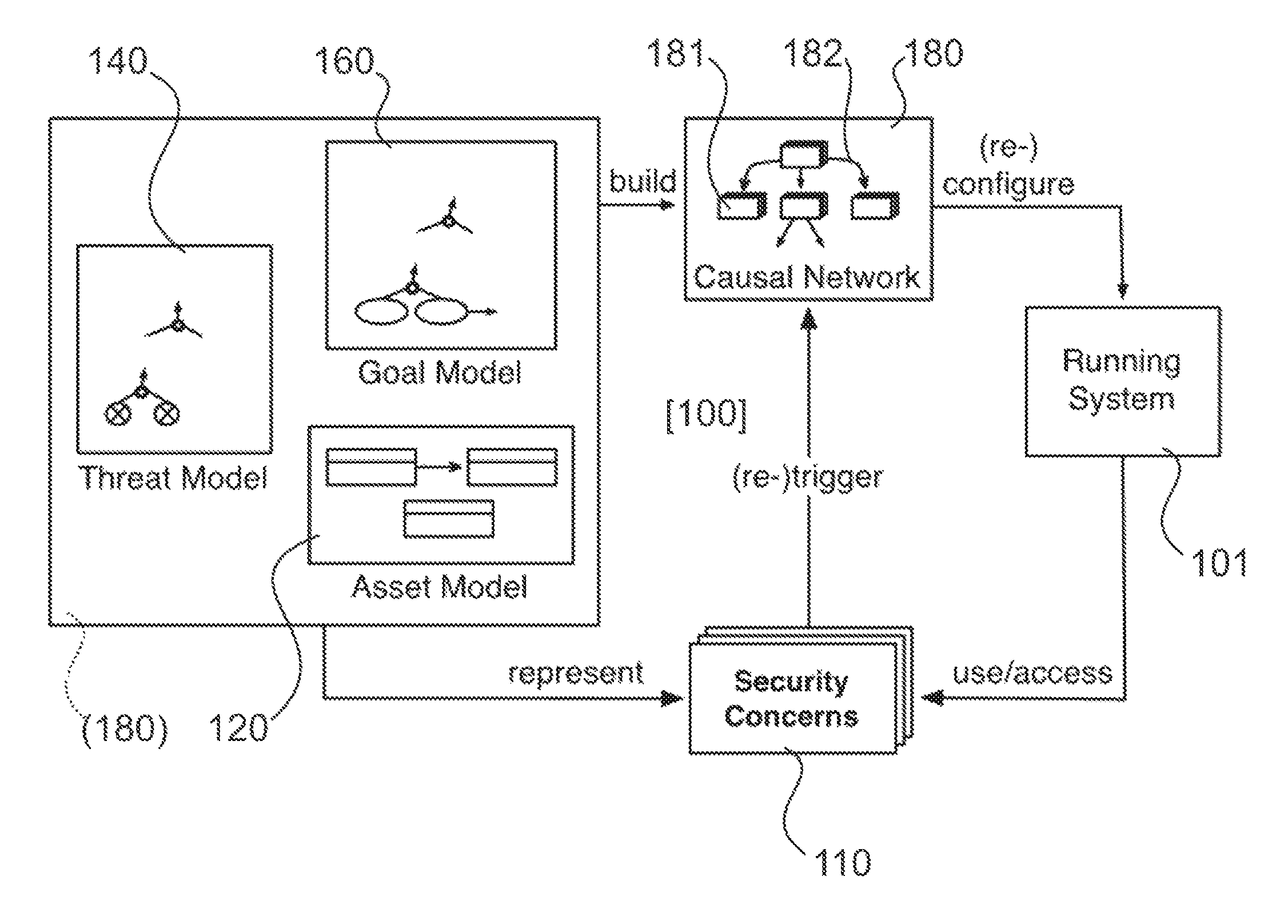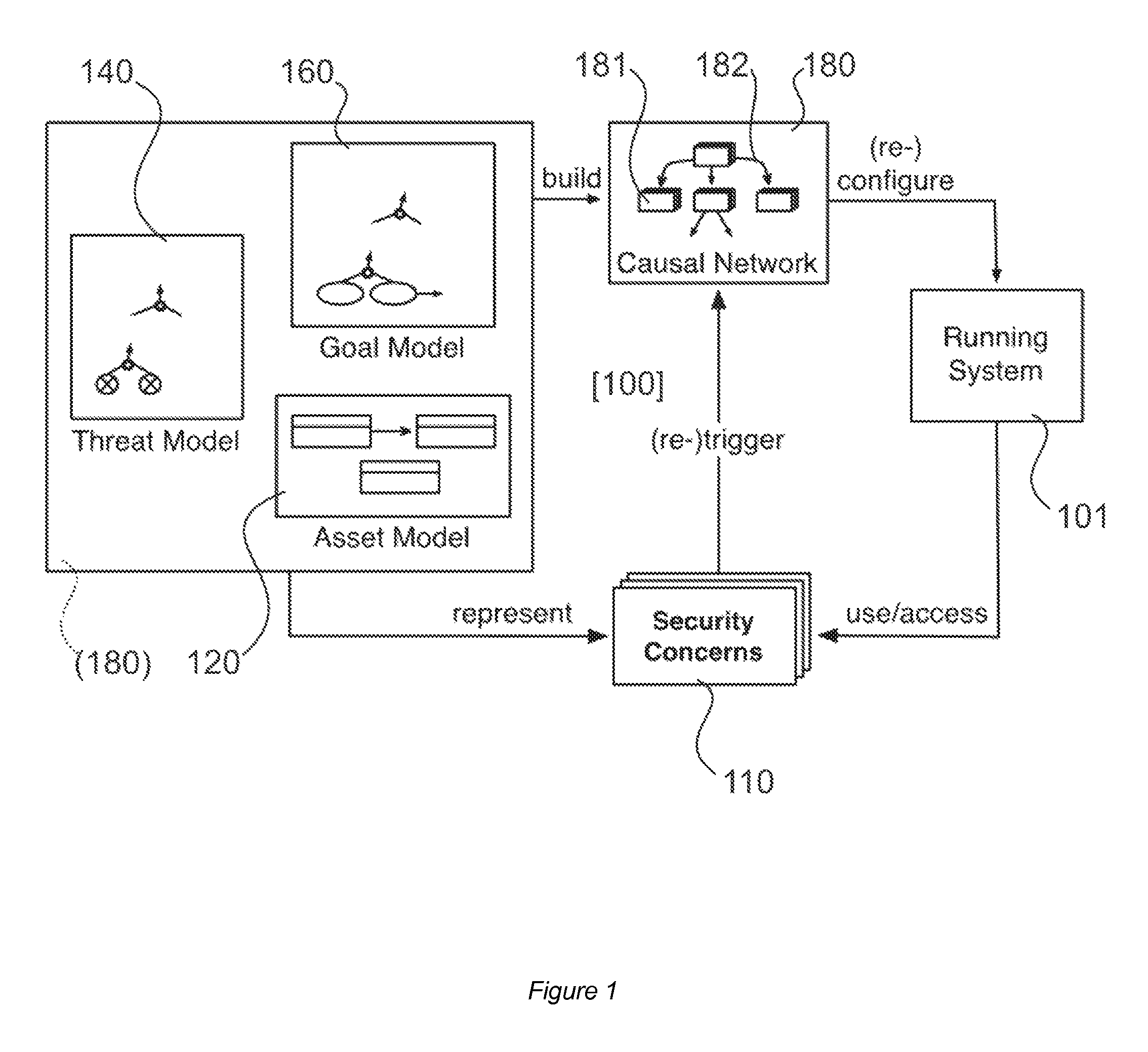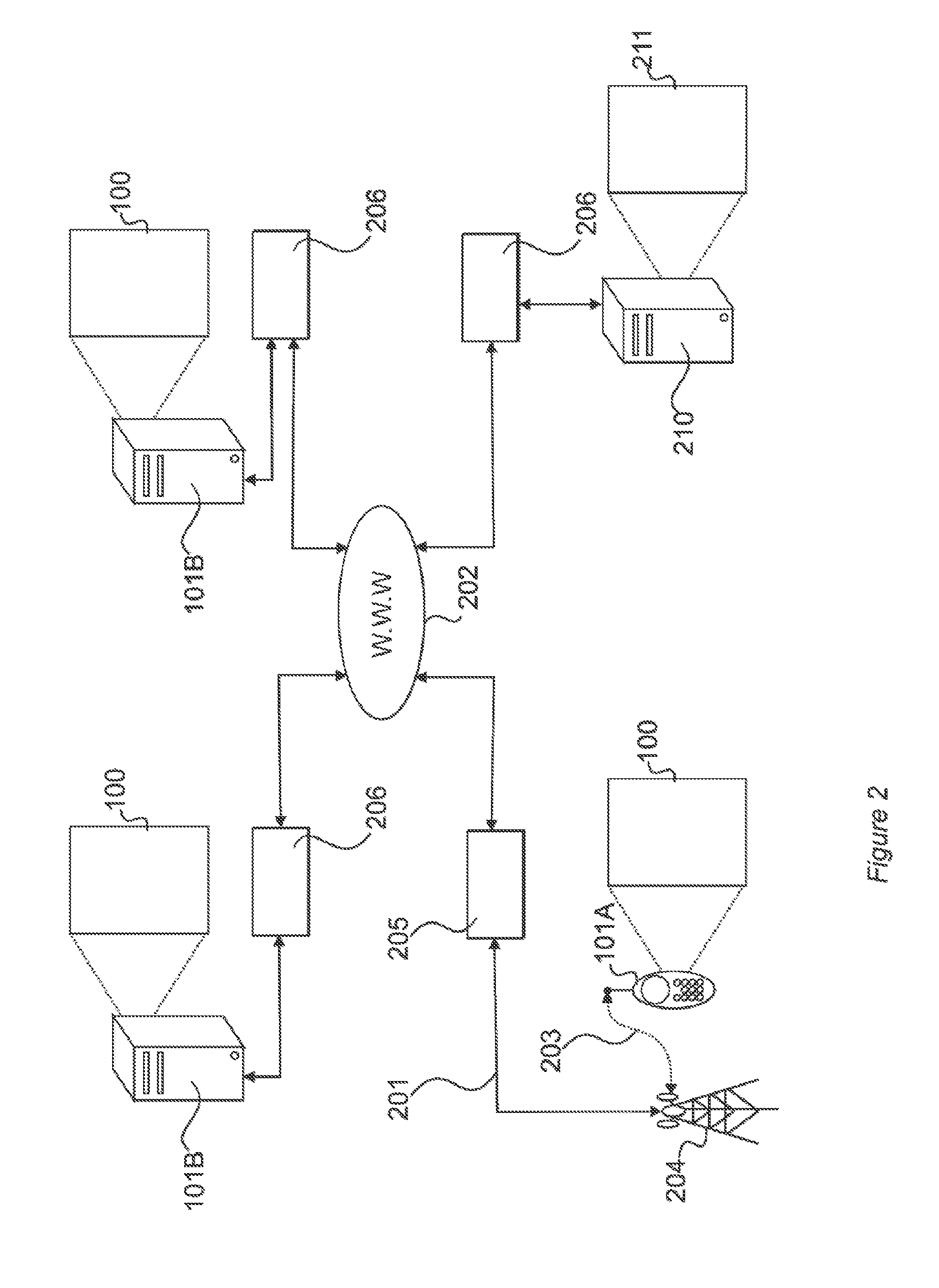Systems and methods for runtime adaptive security to protect variable assets
a technology of adaptive security and runtime, applied in the field of systems and methods for runningtime adaptive security to protect variable assets, can solve the problems of increasing the probability of unauthorized access by an intruder, not considering assets during the development and operation of secure software systems, and increasing the possibility of compromising. , to achieve the effect of reducing security risks
- Summary
- Abstract
- Description
- Claims
- Application Information
AI Technical Summary
Benefits of technology
Problems solved by technology
Method used
Image
Examples
Embodiment Construction
[0072]There will now be described by way of example a specific mode contemplated by the inventors. In the following description numerous specific details are set forth in order to provide a thorough understanding. It will be apparent however, to one skilled in the art, that the present invention may be practiced without limitation to these specific details. In other instances, well known methods and structures have not been described in detail so as not to unnecessarily obscure the description.
[0073]The adaptive security architecture 100 of the invention considers application variables embodying assets as first-class entities in development and operation of secure software systems. As shown in FIG. 1, the security models represent security concerns 110 along with the other requirements of a system 101. In particular, asset, threat and goal models 120, 140, 160 are implemented. The asset model 120 represents assets under protection and their relationships, wherein each asset is linke...
PUM
 Login to View More
Login to View More Abstract
Description
Claims
Application Information
 Login to View More
Login to View More - R&D
- Intellectual Property
- Life Sciences
- Materials
- Tech Scout
- Unparalleled Data Quality
- Higher Quality Content
- 60% Fewer Hallucinations
Browse by: Latest US Patents, China's latest patents, Technical Efficacy Thesaurus, Application Domain, Technology Topic, Popular Technical Reports.
© 2025 PatSnap. All rights reserved.Legal|Privacy policy|Modern Slavery Act Transparency Statement|Sitemap|About US| Contact US: help@patsnap.com



